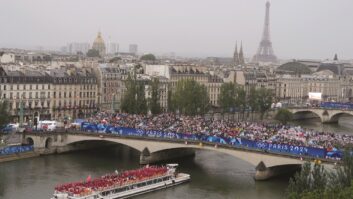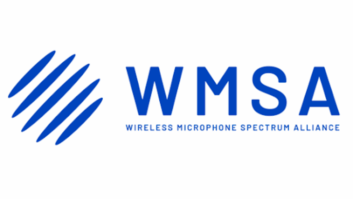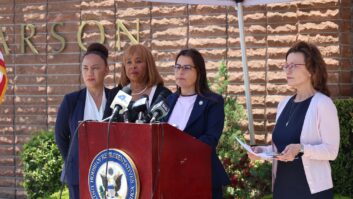‘Night of Nights’ Morse Broadcast Marks 100th Anniversary of KPH
A century of radio history was marked on July 12, 2005, when ex-RCA coast station KPH returned to the airwaves 100 years after first transmitting Morse Code traffic from San Francisco.
In its heyday, the ex-RCA station was part of a global network that relayed CW (Continuous Wave) messages between ships and shore, providing a reliable, vital marine communications system for all concerned.
Shut down and left to the elements with the cessation of commercial U.S. Morse traffic, KPH has been since been restored by the volunteer-run Maritime Radio Historical Society and the National Parks Service.
Since 2000, the MRHS has staged annual “Night of Nights” Morse Code broadcasts to revive the romance of Morse on America’s airwaves.
“After this year’s broadcast, we were deluged by letters from people from around the world, who had been waiting with their earphones for KPH to return to the air,” says MRHS secretary and chief CW operator Richard Dillman. “Many wrote and said they used to listen to KPH’s ship-to-shore traffic for years, and never ever expected to hear it again after the 1999 closing.
“Hearing KPH alive again means a lot to these folks.”
A century of service
Seven years before RCA founder and then-CW keyman David Sarnoff tuned into the Titanic’s Morse Code distress calls, KPH began Morse Code service from San Francisco’s Palace Hotel (hence the PH in its name).
Displaced by the 1906 San Francisco earthquake and fire, KPH’s operations center moved to a number of locations until settling into Point Reyes in 1946. Today, the site is part of the National Parks Service’s Point Reyes National Seashore.
Meanwhile, KPH’s transmitter and antenna site remains at Bolinas, Calif., where it has been since the early 1920s. It is located at the old American Marconi Company facility for trans-Pacific point-to-point communications, which was established in 1913.
From 1905 to 1999, KPH was known as “the wireless giant of the Pacific.” Twenty-four hours a day, 365 days a year, CW operators manned their keys, sending out commercial messages from shore and receiving replies, status reports and distress calls from sea.
Officially, KPH’s radio turf was the Pacific Ocean. However, when shortwave propagation conditions cooperated, “its signals could be heard around the world,” says Dillman.
During its history, the wireless operators at KPH saved countless lives as they heard and responded to ships’ SOS calls. Their “Den of Thieves,” as the operators within the crowded KPH operator room were known, were the best; “able to copy the worst fists” – incompetent CW operators – “and the highest speeds on the air,” states the historial society’s site www.radiomarine.org
When U.S. commercial Morse signed off on July 12, 1999, it was a sad day for the station’s crew and fans, among them Dillman and MRHS President Tom Horsfall, who were in the room when the final Morse message was sent from Half Moon Bay.
Two years before, KPH’s Point Reyes center had been shut down. As a tribute to the operators’ decades of careful listening, KPH Station Manager Jack Martini didn’t turn off the room’s radio receivers. Instead, he left them running, maintaining a silent vigil over the Pacific’s airwaves.
Reborn
A few years after KPH had been taken out of service, Horsfall and Dillman returned to the station. Having successfully restored a 4U Radiomarine console from the World War II Victory ship Rider Victory/KQTK, the men were eager to keep KPH from decaying into history.
“We managed to talk our way past a security guard, and get into the Operators’ Room,” Dillman recalls. “As we approached it, we could hear the radio receivers through the door. They were still on, just as Jack Martini had left them. Meanwhile, the room itself was a time capsule: It was intact, just as if it had been abandoned only five minutes earlier.”
The same could not been said for KPH’s transmitter hall.
(click thumbnail)Steve Hawes checks the frequency of an exciter for a PW-15 transmitter.
“Moisture and salt from sea air had gotten in through the vents, and windows that were no longer sealed,” says Horsfall. “Many of the 1950s’ vintage RCA transmitters were damp inside from condensation.”
Despite these obstacles, the MRHS decided to tackle KPH’s restoration. With the active support of the National Parks Service, Horsfall, Dillman, broadcast engineer Steve Hawes and former KPH operator Denice Stoops (KPH’s first female operator), they cleaned and weatherproofed the transmitter hall, then started restoring the station’s equipment.
“Wherever possible, we used original parts to do the repairs,” Horsfall says. “Fortunately, KPH’s engineers kept a big inventory of replacement parts in stock.” Repairs were also made to the station’s extensive antenna farm; a task that required much restringing of wires.
The big night and beyond
KPH’s return to the airwaves on July 12, 2005 was a triumph for the MHRS on many levels. Not only did a big crowd turn out for the event – ” the largest we’ve ever seen for the Night of Nights”, Horsfall says – but the station received lots of CW responses from ships and other shore stations.
“One of the ships who contacted us in Morse wanted to know if we were available to actually relay messages, just like the old days,” Dillman says. “Meanwhile, Coast Guard communications station NOJ in Kodiak, Alaska, replied to us in flawless Morse, even though the Coast Guard stopped using it in 1993!”
Also on air for the Night of Nights were WLO, Mobile, Ala., and KLB Seattle, plus the Coast Guard station NMC which is co-located with KPH.
In addition to bringing KPH back to life, the MRHS launched KSM, the first commercial CW station to be licensed by the FCC in decades.
“KSM’s purpose is to keep commercial Morse traffic alive in the U.S.,” says Horsfall. Although KPH’s owners Globe Wireless have been very supportive of our efforts, they are increasingly using KPH’s channels for data communications. This is why KSM needs to exist, to ensure that channels are always available for CW traffic.”
Co-located with KPH, KSM is licensed to operate on 426, 500, 6474 and 12993 kHz. For actual on-air times, check www.radiomarine.org
“Ultimately, we want to keep CW alive as a form of wireless communications,” says Dillman. “After all, it is very bandwidth and time-efficient, and able to cut through atmospheric conditions that foil voice and modern data communications. We also think that it just makes sense to have radio communications that still uses actual human operators. For this reason alone, Morse deserves to be preserved.”






